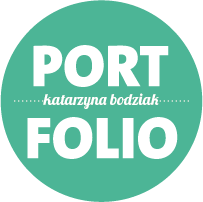What unanswered questions remain in today’s museum scene? This idea was put to me by my professor at university in Düsseldorf. My answer evolved into a multi-facetted idea for an exhibition about Nefertiti, The Rosetta Stone, the Crown of Montezuma and the Treasures of Priam. Long ago, colonial powers removed these cultural treasures from the faraway lands where they were discovered. They were taken, sometimes in secret or by force, sometimes by deception. Sometimes everything was above board… At least according to the rudimentary legal systems of the time. Every once in a while, the artefacts were stolen from the alleged thieves, before they could get them home.
WHO DO THESE CULTURAL TREASURES BELONG TO? Is it a simple case of “finders, keepers” or should they be returned to successors of their creators? Or have they only gained in value due to the efforts of the institutions they came to be housed in? The issue is a tangled web of cryptic questions and complex answers. For that reason, the aim was not to influence, but to inform. I designed the exhibition so that the decision was left to the visitor.
On entering the exhibition space, attention is immediately drawn to a large sign hanging from the ceiling. It says “WHO DO THESE CULTURAL TREASURES BELONG TO?” The question is unavoidable.
The first clue is on the floor. Or rather, it is the floor: an interactive map of the globe highlights the countries featured in the exhibition. Each artefact is assigned a colour. When a visitor steps on a nation that played a part in the history of any of the exhibits, it lights up in the corresponding colours. What’s more, all other countries involved in the conflict turn that colour, showing the artefact’s journey from discovery to its current destination – including all its adventures in between. If more than one ancient treasure is linked to the nation that the visitor is standing on, then it glows in all relevant colours.

Now its time to take a closer look at the exhibits: the Crown of Montezuma, the Treasure of Priam, the Rosetta Stone and the Bust of Nefertiti are represented by abstract, larger-than-life models. They are almost completely white, only the edges are coloured in bright neon shades that relate to the map on the floor. But the sculptures are more than just oversized ornaments – they hide all sorts of precious information. It’s up to the visitors to discover it!

The feathers on the Crown of Montezuma open like a fan. The writing on the Rosetta Stone can be pulled out like a chest of drawers. The Treasure of Priam’s famous headdress functions like a curtain, that visitors can open to discover the story behind it. The earrings are working earphones. Each sculpture contains two forms of information: audio and visual.

As I researched the topic, I realised that it is not only a diplomatic tug-of-war. It is a highly contentious and emotive issue. I found interview footage of extremely influential people, representing their countries and their beliefs, giving impassioned speeches. When they speak, their voices are filled with anger, despair, stubbornness, mockery and pathos. I felt that guests should hear these recordings. I collated and edited the quotes, in such a way as to convey the passion and drama of the debates.
The controversial and sensitive nature of the issue is also documented by a large number of articles from newspapers and magazines. There were also a great deal of pamphlets and photos from demonstrations, not to mention other visual materials. These testimonies often highlight the depth of emotion and strength of feeling. That is what really moves us.
But we must be careful not to let this raw emotion cloud our views. Cold hard facts are just as important. The “what, when and where?” can be found on a stele in front of each sculpture, beside a picture of the genuine archeological artefact. The lower part of the stele serves as another interactive source of information.
 The tickets have tear-off strips with the name and colour of each object. The visitors can place them into transparent ballot boxes integrated into the lower part of the steles. Because the votes are visible, the compartments act like a barometer of public opinion as the they fill up.
The tickets have tear-off strips with the name and colour of each object. The visitors can place them into transparent ballot boxes integrated into the lower part of the steles. Because the votes are visible, the compartments act like a barometer of public opinion as the they fill up.
At the end of the day, the legal situation should be the decisive factor. But the disputes cannot be resolved under modern law. There is now legislation in place that would put an end to the debate. However, such laws often only recently came into force, and cannot be applied retrospectively. Others are so open to interpretation, that they actually cause more confusion. To indicate this chaos, the entire exhibition is surrounded by a metal installation that winds it’s way around the space. It’s as if the legal documents have been mixed up and blown around by a whirlwind.
Katarzyna Bodziak under the supervision of Prof. Teufel and Prof Vetter (FH Düsseldorf, edi – Exhibition Design Institute, MA Exhibition Design)



